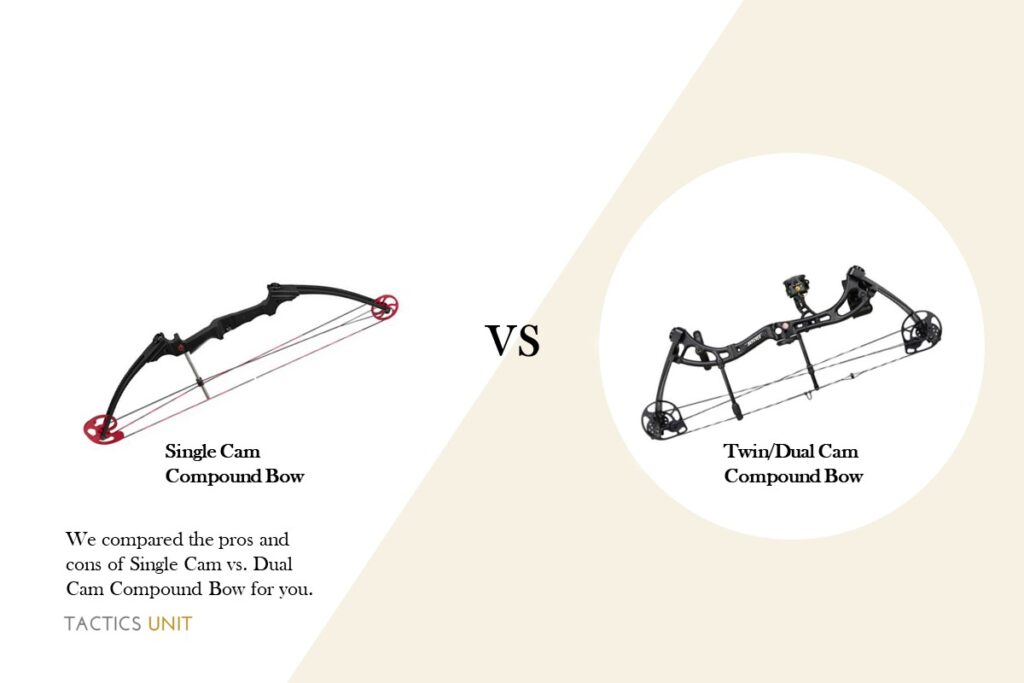The term “bow fishing” is used to describe the sport of catching fish using a bow and arrow. While there are many different ways in which this can be done, one popular method uses special reels such as bottle or drum reels that hold a spooled line (also known as an arm) at their center.

The most common type of bowfish reel is the drum or bottle reel because they offer some distinct advantages over other types of reels commonly used by archers.
In this article, we will explore these two very popular styles of bow fishing reel, what makes them so effective for certain species of fish, as well as how to choose between them.
We’ll also talk about some disadvantages of each style. Finally, we’ll give you a brief overview of all the kinds of bow fishing reels available on the market today.
Bowfishing Drum Reel
A drum reel consists of a spinning head mounted above a cylindrical body with a cover plate attached to it. At its center is a fixed spool from which the line length is drawn out through several guide rollers.
How It Works
When fishing, the user releases his/her grip on the handle while allowing the free end of the line to unwind off the top of the reel. As the line unspools, it gradually pulls the head up towards the rod tip until it finally catches onto something underwater.
This causes the entire weight of the reel’s assembly to hang down below the rod. Once the desired amount of slack has been achieved, the bow fishers tighten the trigger mechanism and stop pulling on the line.
Then he/she lifts the front of the rod to get a better view of any catch. If nothing has appeared after waiting 30 seconds, the line should be released back into the water where more bait might have floated near the hook during the wait.
Benefits of a Bowfishing Drum Reel
An advantage of a drum reel is that it allows the angler to keep both hands on the rod without having to worry about losing control of the reel since it hangs freely beneath it.
Another benefit is that if the reel gets hung up on something when being retrieved, it won’t pull too much additional slack out of the spool, thus preventing tangles and jamming.
Drawbacks of a Bowfishing Drum Reel
However, due to its bulkiness, a drum reel doesn’t allow the use of small-diameter rods. It is not uncommon for people who want to try out bow fishing for themselves but don’t own suitable equipment to buy a cheap plastic replacement to start with.
Bowfishing Bottle Reel
Bottle reels differ slightly from drum reels in that instead of relying on gravity to lower the whole assembly once a fish is hooked, they rely on the centrifugal force generated by turning a corkscrew inside a long narrow cylinder.
Overview
These reels were first invented in Italy around 1550 before spreading throughout Europe and eventually becoming widely used across North America.
Modern versions of the original design are still manufactured today under various brand names like Penn, San Juan, Redington, Berkley, and others.
What It’s Made of
A bottle reel consists of a rotating central shaft enclosed within a circular metal tube made of thin-wall steel with a rubber gasket running along its inner surface. Above and below the tube runs a hollow brass sleeve connected to the base of the rod via a threaded collar.
On either side of this brass sleeve, lies two identical pieces of flat material—usually wood, fiberglass, or composite materials—called flanges. Each of these flanges contains several grooves cut into their surfaces.
How It Works
During operation, the upper flange turns clockwise, causing the reel’s internal gears to rotate faster than those outside the tube. Because the gear system is enclosed, the speed is transmitted smoothly from the outer gears to the ones inside, creating no vibration.
When a fish strikes, the action creates tension in the line and forces it to wrap tightly against the surface of the flange located closest to the rod. This prevents the line from sliding past the next set of teeth and keeps it locked in place.
Once sufficient drag is created, the reel begins to turn counter-clockwise, forcing the line to wind tighter around the stationary spool. The direction of rotation depends upon whether the reel is designed to retrieve or cast.
Since the gear train is enclosed, the motion isn’t jerky-like on traditional spinners. This means that the process is smooth and consistent, and the result feels natural every time.
There is virtually no possibility of the reel getting hung up on anything. And unlike a typical spin casting reel, a bottle reel does not need any bail adjustment mechanism.
Benefits of a Bowfishing Bottle Reel
1. Effective on Light Lines
Although drum reels do provide superior performance, bottle reels have some significant benefits that make them worthy competitors in the marketplace. One major plus is their ability to work effectively on lighter lines.
2. Easy to Transport
They produce less friction and therefore require thinner monofilament lines to function correctly. Additionally, the absence of weights hanging underneath the reel itself reduces the overall mass, making it easier to transport.
3. Features Adjustable Drag Systems and Built-in Brakes
Bottle reels also feature adjustable drag systems, enabling users to customize the amount of resistance applied according to conditions. Unlike drums, bottles also include built-in brakes that prevent the spool from spinning beyond 360 degrees.
4. Decent Accuracy
Most importantly, bottle reels improve your accuracy! Instead of fighting against inertia produced by the reel’s momentum, you can now focus solely on maintaining perfect balance during release.
Drawbacks of a Bowfishing Bottle Reel
1. Alignment Issues
Perhaps the biggest drawback associated with bottle reels is their inability to maintain proper alignment while retrieving. Due to their lack of rigidity, they often twist and bend under pressure, resulting in inaccurate casts and missed hooks.
2. Lifting Problems
Another problem arises when trying to lift the reel directly overhead to access the spool. For this reason, only experienced bow fishers should attempt to cast with bottle reels.
3. Expensive and Not Suitable for Beginners
In addition, they aren’t recommended for beginners or shorter people due to their tendency to wobble and shake uncontrollably. Furthermore, bottle reels are rather expensive compared to alternatives.
4. They Vibrate When Dragging a Heavy Sinker
Another disadvantage of these reels is that they cannot operate properly unless they’re allowed to run freely. This is especially true if they become snagged while retrieving. Also, due to their light construction, they tend to vibrate quite easily when dragging a heavy sinker behind them.
5. Best Suited for Large Saltwater Bodies
Lastly, even though they work great for larger saltwater game fish, bottle reels may not perform satisfactorily on smaller freshwater options such as trout. This is mainly caused by the relatively large size required to accommodate heavier line thicknesses needed for bass fishing.
How to Choose a Bowfishing Reel
If you decide to go with a bottle reel, here are some things you should consider when shopping for one.
1. Decide on What You Want From a Reel
First, determine exactly what purpose the reel will serve. Will it primarily be used for fishing in rivers, lakes, or oceans? Next, figure out how thick you’d prefer the line to be.
Generally speaking, thicker lines are more durable and capable of supporting heavier loads, whereas thinner threads are best suited for delicate applications.
2. Consider the Distance Between the Spool and the Eyelets
After deciding on the line thickness, select a reel based on the distance between the spool and the eyelets. You should pick one whose dimensions match yours closely enough to avoid problems later on.
3. Ensure You’ve Done Proper Research
Finally, check out customer reviews posted online to see what current owners think of particular models. Online forums are another good source of providing information regarding specific brands’ durability, reliability, and ease of maintenance.
Remember that choosing a product purely based on price alone can sometimes lead to regret later on. Spend a little extra money upfront to ensure that you receive quality products in return.

